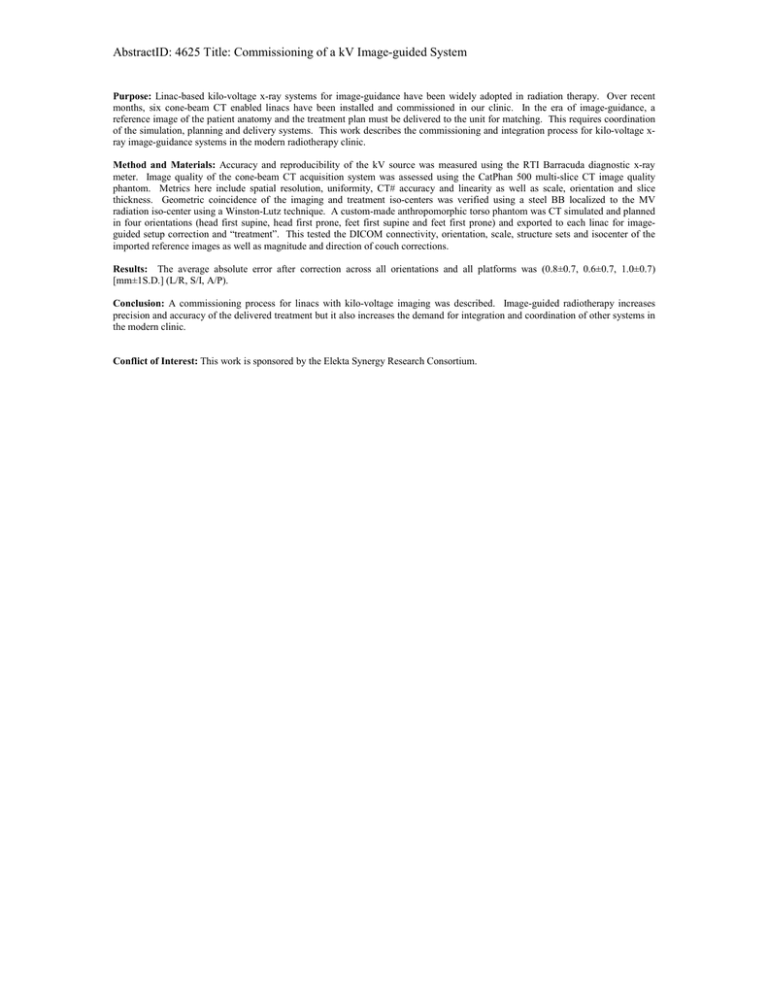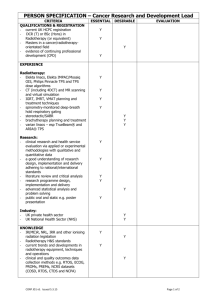AbstractID: 4625 Title: Commissioning of a kV Image-guided System
advertisement

AbstractID: 4625 Title: Commissioning of a kV Image-guided System Purpose: Linac-based kilo-voltage x-ray systems for image-guidance have been widely adopted in radiation therapy. Over recent months, six cone-beam CT enabled linacs have been installed and commissioned in our clinic. In the era of image-guidance, a reference image of the patient anatomy and the treatment plan must be delivered to the unit for matching. This requires coordination of the simulation, planning and delivery systems. This work describes the commissioning and integration process for kilo-voltage xray image-guidance systems in the modern radiotherapy clinic. Method and Materials: Accuracy and reproducibility of the kV source was measured using the RTI Barracuda diagnostic x-ray meter. Image quality of the cone-beam CT acquisition system was assessed using the CatPhan 500 multi-slice CT image quality phantom. Metrics here include spatial resolution, uniformity, CT# accuracy and linearity as well as scale, orientation and slice thickness. Geometric coincidence of the imaging and treatment iso-centers was verified using a steel BB localized to the MV radiation iso-center using a Winston-Lutz technique. A custom-made anthropomorphic torso phantom was CT simulated and planned in four orientations (head first supine, head first prone, feet first supine and feet first prone) and exported to each linac for imageguided setup correction and “treatment”. This tested the DICOM connectivity, orientation, scale, structure sets and isocenter of the imported reference images as well as magnitude and direction of couch corrections. Results: The average absolute error after correction across all orientations and all platforms was (0.8±0.7, 0.6±0.7, 1.0±0.7) [mm±1S.D.] (L/R, S/I, A/P). Conclusion: A commissioning process for linacs with kilo-voltage imaging was described. Image-guided radiotherapy increases precision and accuracy of the delivered treatment but it also increases the demand for integration and coordination of other systems in the modern clinic. Conflict of Interest: This work is sponsored by the Elekta Synergy Research Consortium.




